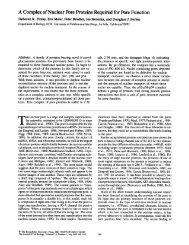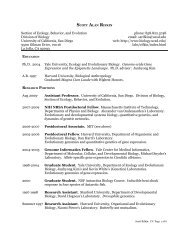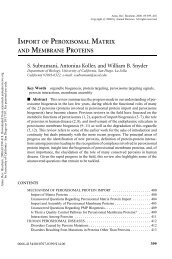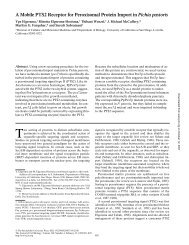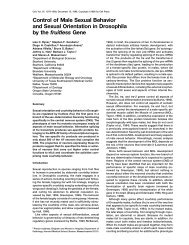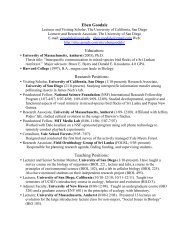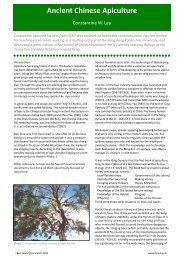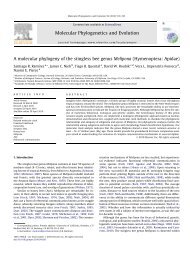Bee Basics - USDA Forest Service - US Department of Agriculture
Bee Basics - USDA Forest Service - US Department of Agriculture
Bee Basics - USDA Forest Service - US Department of Agriculture
Create successful ePaper yourself
Turn your PDF publications into a flip-book with our unique Google optimized e-Paper software.
It may seem strange, but honey bees may becontributing to the extinction <strong>of</strong> some nativebees. Honey bees can out-compete many nativebees and extract vast amounts <strong>of</strong> pollen andnectar from every habitat in which they live.We can only speculate what the impact <strong>of</strong> thearrival <strong>of</strong> honey bees has had on the populations<strong>of</strong> native bees in the 400 years since they werebrought to North America by Europeancolonists.Habitat loss and fragmentation areadversely affecting populations <strong>of</strong> nativebees. Pesticides may also have an impacton many species including native bees. Thisbecame dramatically apparent in New Brunswick,Canada, years ago when the blueberry crop wasnearly wiped out despite the fact that the plants appearedhealthy.It was determined that the program to control thespruce worm in nearby forests had almost eliminated thenative bees. Blueberry farmers started litigation that wentall the way to the Supreme Court <strong>of</strong> Canada. Eventually,they succeeded in having the Government place restrictionson the use <strong>of</strong> pesticides. It took a number <strong>of</strong> years before the localpopulations <strong>of</strong> native bees were restored, and blueberry crops becameplentiful once again.The situation for all pollinators, but especially managed and native bees inthe United States, caused sufficient concern that the National Research Council<strong>of</strong> the National Academy <strong>of</strong> Sciences issued a report titled “Status <strong>of</strong> Pollinatorsin North America” in October 2006. The document presents evidence <strong>of</strong>downward, long-term trends <strong>of</strong> the populations <strong>of</strong> many pollinators, includingsolitary bees and some bumble bee species. However, one <strong>of</strong> the report’s moreimportant findings was that a great deal <strong>of</strong> additional information is still neededto begin to assess population trends and discover their causes.The National Research Council recommendations include the creation<strong>of</strong> economic incentives for the study <strong>of</strong> bee populations through a system<strong>of</strong> long-term monitoring and for the development <strong>of</strong> practices promotingpollinator conservation and sustainability. Another recommendation is toencourage public land managers and private landowners, including farmers andhomeowners, to adopt “pollinator-friendly” practices, many <strong>of</strong> which requireonly a small expenditure to implement.31



